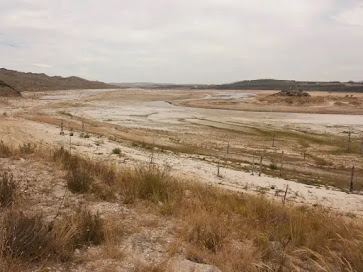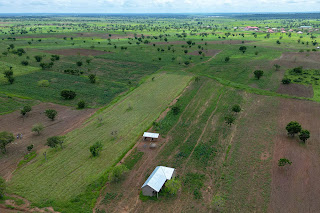What do environmental change intensify?
Existing hydrological variability
Variability is a key term in Africa in last post. The intensification of warming and precipitation will have an even greater influence on non-linear hydrological responses, such as fluctuating river discharge. In South Africa, the annual river flow has a median coefficient of variation (CoV) of 82%, which is 3.5 times higher than the global median of 31% (McMahon et al., 2007). This has important implications for the water supply tied to food production. Rain-fed agriculture, which dominates in Sub-Saharan Africa, will face enormous issues due to the unpredictable and variable timing of rainfall (Taylor, 2017).
what will happen in a warming world?
• As the air warms, moisture-holding capacity increases at the Clausius-Clapeyron rate (Held and Soden, 2006). A trend to an increasing extreme storms but with fewer, lighter precipitations (Allan and Soden, 2008)→ increasingly frequent flood and drought catastrophes (such the Malawi floods in 2019 and the Cape Town drought from 2015 to 2018) → elevated uncertainties of food supply
• Exaggerated shifting position of rain belts (Bates et al., 2007) → Precipitation has far higher geographical and temporal variability (Boko et al., 2007)→ higher variability of water for food.
• More erratic precipitation readily results in more erratic soil moisture→ soil erosion and fertile land to be degraded→ reduces crop yields.
Figure 2:the frequency of severe precipitation increases significantly with less frequent events.The rise in severe food insecurity has been largely attributed to extreme climatic disturbances. Despite the marginal advantages of rising atmospheric CO2 concentrations on plant development, production decreases for staple crops are expected in most of Africa if temperatures rise over 2°C (Muller et al., 2012). Smallholder farmers produce the majority of crops, which are rain-fed, with a far smaller share of arable land being irrigated than the worldwide average. As a result, crop yields and stock productivity are particularly susceptible to regime changes (e.g. timing). For instance, from March to May in East Africa, the "long rains" are suppressed (Cuthbert et al., 2019). Due to the unstable rain-fed agriculture, 200 million people in sub-Saharan Africa experience food insecurity (Ward et al. 2007). Heat stress and water supply disruptions caused by rising hydrological variability also impact the productivity of fisheries, whether freshwater or marine.
Figure 4: Flood in Malawi
Malawi, for example, is a small landlocked nation in Southern Africa with 90% of agriculture dependent on rain, making Malawians very sensitive to the consequences of climate-related shocks and pressures. Both floods and droughts had a significant negative impact on crop output, with average losses ranging from 32 to 48 percent (McCarthy, 2021). A quarter of children are chronically malnourished.
However, food and water security are more than a climate issue as climate justice will be discussed in next post.






Comments
Post a Comment